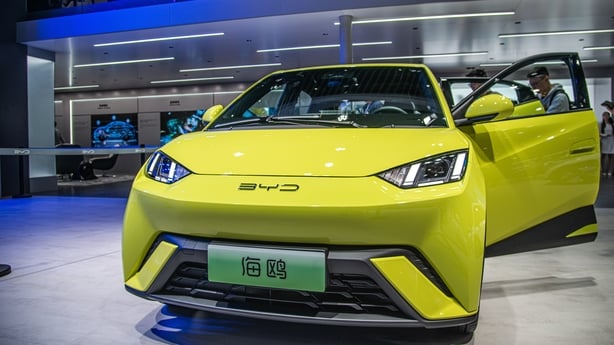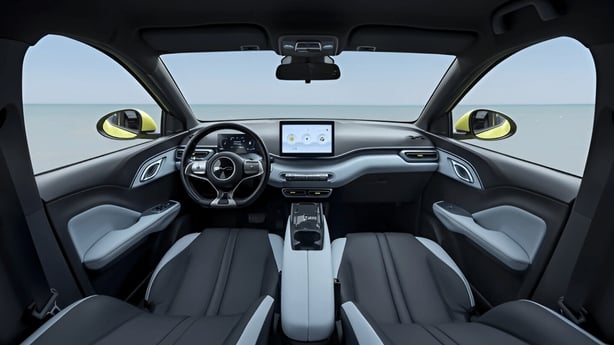One of the biggest deterrents for people considering buying an electric car is price, with car manufacturers furiously racing to bridge the gap between what they can produce profitably and what customers can afford. Now, it looks like the Chinese company, BYD, will win that race.
Even in the midst of an EV price war in China, BYD's recent decision to sell its smallest electric car - the Seagull - at the equivalent of €8,900 took many industry analysts by surprise.
The company, which has now unseated Tesla from the top EV slot in China, has taken an incredibly aggressive approach to its pricing model - reducing the cost of the five-door, four-seat Seagull in China by €1,150.
The Seagull will come to Ireland early next year, but it won’t be called by that name here. In South America the car is sold as the Dolphin Mini, as it is placed just below the Dolphin model and that may well be the case here and in Europe.
I understand the company’s aggressive pricing will be reflected in Ireland also, and that the aimed-for price pitch will be around €20,000, or possibly less, depending on price negotiations between BYD and its Irish distributor.

Of course, other companies - VW, Stellantis (Peugeot, Citroen and Opel) and Dacia - are aiming for the same price point but the latest indications are that they will be offering cars with smaller batteries aimed at city drivers and with more limited range.
In the case of the Seagull, the batteries will be bigger, with options from 48kW to 57 kW capacities. That translates into a claimed range of between 420km and 510km. By comparison, Dacia’s Spring EV will have an expected range of just 240km. Both the forthcoming Citroen eC3 and the Fiat Panda EV’s will have maximum claimed ranges of 320km.
The Seagull - or Dolphin Mini - is 3.7 metres long, with a four-seat, five-door configuration. The design is quite angular, the roofline is raked and the lines are sharp. Standard equipment will include six airbags, electronic stability control and an electric parking brake. As with other BYD models, the car will have a biggish digital screen at the centre of the dashboard.
Currently the Seagull accounts for 9 per cent of all Chinese EV sales and some 300,000 have been sold since the car’s launch in April of last year.
European manufacturers have been increasingly unsettled by the competitive strides made by Chinese companies like BYD and the EU is considering further tariffs - currently 10 per cent - on Chinese imports. This latest move by BYD is likely to give those executives a few more sleepless nights.

Even one of BYD’s closest Chinese competitors, MG, appears to be falling behind in the race for the prize of a potentially hugely successful budget EV with good range. Speaking at the recent Geneva Motor Show, MG’s head of Production and Planning, David Allison, said MG should be in a position to produce such a car in about two years.
He told Autocar magazine: "I think that it's an area that no one has really exploited successfully yet, because the focus has been very much on larger cars and really where they can charge the amount of money for people that are willing to pay it.
"But I think there's a huge opportunity for someone who can get to the four-metre EV for around €20,000. I think someone can do that with an acceptable range, decent-sized car about that price, and I think that person will clean up with it. And why not us?
He added: "Product development is clearly a long-term thing, but it's not inconceivable that you could go from concept to production in as little as two years."
It looks like BYD will have cut that timeline in half, with its budget car set for launch in Europe and Ireland by next spring.


